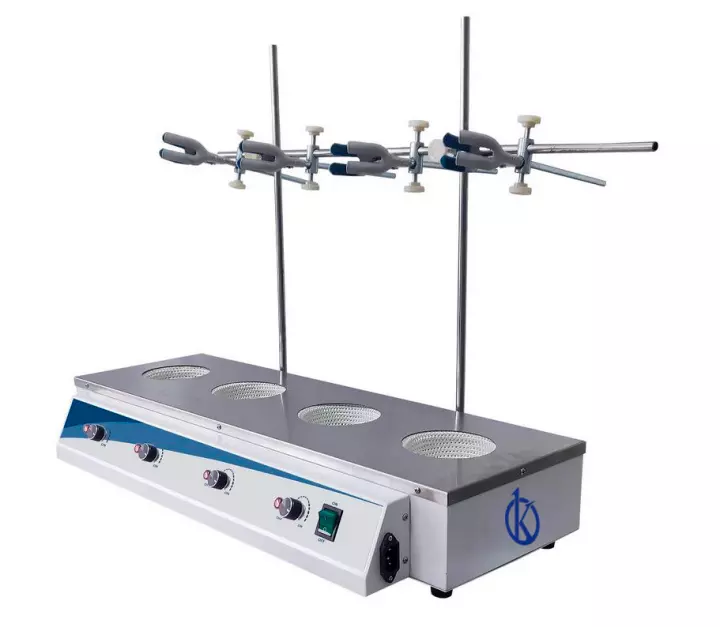The multi-station heating plate is a benchtop and portable laboratory instrument that adapts to multiple processes that require temperature and shaking frequently used in the laboratory, it can be available in 2, 4 and 6-station multi-station models. That is, it is a device that provides simultaneous heating and stirring options, totally ideal for mixing several chemical substances at the same time, this instrument is used to mix solutions from water to 50% glycerin together with a magnetic bar in small open containers or closed. It is an ideal equipment for laboratories that need to do multiple processes.
Regarding its characteristics, we can say that it is an equipment that has electrical heating elements resistant to corrosion and chemical and mechanical attacks. It is very useful for heating containers with liquids, glass materials, or the content inside them, in a uniform and controlled way.
Multi-position heating plates are widely used in chemical process, physical chemical analysis, pharmaceutical analysis and other fields. They can be found in chemistry, biology and biochemistry laboratories, among their most common uses we can find:
- Drying of chemical analysis.
- Heat treatment, evaporation of liquids.
- Studies related to biochemistry and other compounds.
- Heat flasks and other glassware.
Some heating plates have a magnetic stirrer that allows the heated liquid to be stirred automatically, this occurs when a small magnet or stir bar is inserted into it and is preferably used to create solutions or solutions. Typically, the stirrer heating plate has a flat surface on which the vessels containing the fluids to be heated or stirred, or both, are placed. This surface is generally made of materials that are good thermal conductors such as aluminum [Al] or ceramic materials. Hot plates have also been developed that exclusively use infrared radiation sources to heat.
A heating plate with stirrer has a heating element (an electrical resistance), a control system (on, off, temperature control, stirring control and its respective motor). The motors used in this type of instrument are generally single-phase induction, which is called degraded pole. Its speed depends on the number of poles and the frequency of the supply voltage.
Heating plate features
- Ideally set to simultaneously and independently operate up to six samples.
- Fast and uniform heating.
- Microprocessor control.
- Temperature of 35 ° C, up to 450 ° C.
- It has a thermostat capable of regulating the temperature.
- Durable and stable operation.
Proper use of a heating plate
- First, put the reagents and the solvent in the indicated container.
- Add the magnetic core.
- Fix the preparation on the plate.
- Connect the appliance to the electrical current.
- Connect the agitator.
- Set the thermostat to the desired temperature.
- At the end of the process, disconnect the thermostat and then disconnect the agitator.
At Kalstein we are MANUFACTURERS and we offer you high quality multi-position heating plates at the best PRICES. That is why we invite you to visit our page, in its section of products available at the Products menu. HERE


